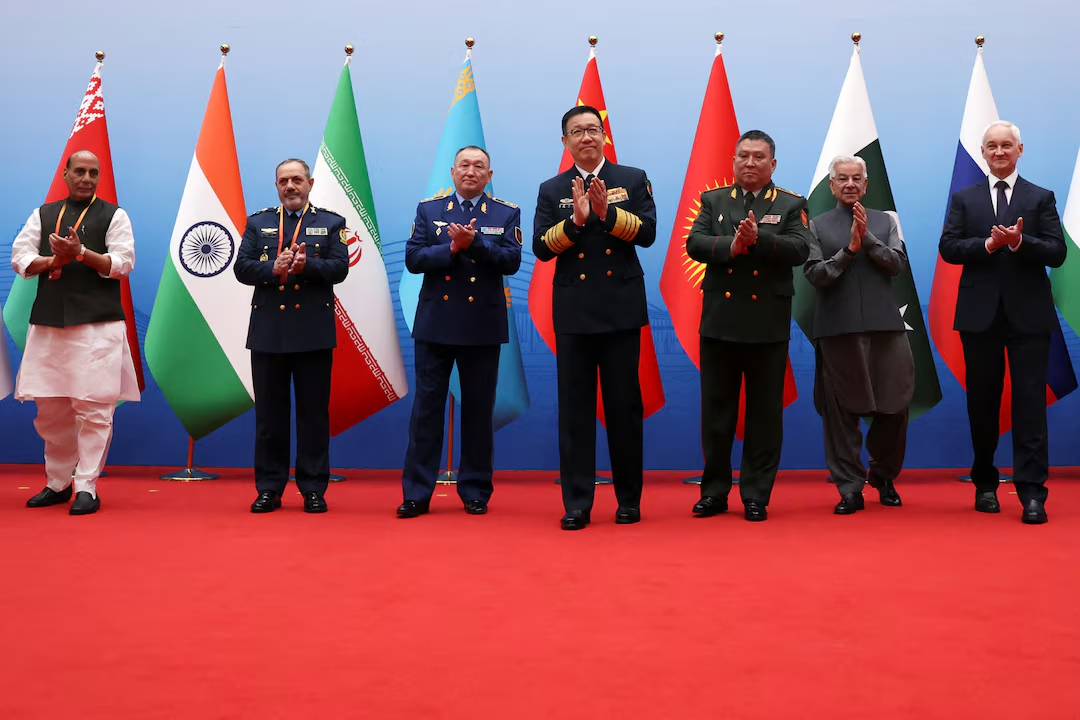- Courses
- GS Full Course 1 Year
- GS Full Course 2 Year
- GS Full Course 3 Year
- GS Full Course Till Selection
- Answer Alpha: Mains 2025 Mentorship
- MEP (Mains Enrichment Programme) Data, Facts
- Essay Target – 150+ Marks
- Online Program
- GS Recorded Course
- Polity
- Geography
- Economy
- Ancient, Medieval and Art & Culture AMAC
- Modern India, Post Independence & World History
- Environment
- Governance
- Science & Technology
- International Relations and Internal Security
- Disaster Management
- Ethics
- NCERT Current Affairs
- Indian Society and Social Issue
- NCERT- Science and Technology
- NCERT - Geography
- NCERT - Ancient History
- NCERT- World History
- NCERT Modern History
- CSAT
- 5 LAYERED ARJUNA Mentorship
- Public Administration Optional
- ABOUT US
- OUR TOPPERS
- TEST SERIES
- FREE STUDY MATERIAL
- VIDEOS
- CONTACT US
Census of India: Importance, History, and Connection to Delimitation
Census of India: Importance, History, and Connection to Delimitation
The government of India is planning to conduct the long-delayed Census next year, with the aim of completing the process by 2026. This Census is connected to two significant outcomes:
- the delimitation of Parliamentary constituencies, which has been on hold for the last 50 years, and
- the implementation of women’s reservation in Parliament.
What is the census?
- A census is the process of collecting, compiling, analysing, and disseminating demographic, social, and economic data about all individuals in the country at a specific time.
- There is a constitutional mandate to carry out a census in India. It is mentioned as item 69 on the Union List of subjects, meaning only the Union government is empowered to undertake the exercise.
- It is also mandated with several references regarding the reorganisation of constituencies for Parliament and state assemblies.
- However, the Constitution does not specify when the census should be conducted or how frequently it should take place.
- The Census of India Act of 1948, which establishes the legal framework for the Census, also lacks details on its timing or periodicity. As a result, there is no constitutional or legal requirement for a census to be conducted every 10 years.
India's Census
This round might also include caste data, which was last officially recorded in 1941, to provide insights for targeted policies. |
What is the Significance of Census?
The Census may not be a legal requirement, but its utility has established it as a regular and essential exercise as it provides a comprehensive overview of the country’s demographic, economic, social, and cultural profile. The significance of the census is:
- It provides primary and authentic data at the village and ward levels for towns that serve as the foundation for all statistical activities, influencing the planning, administration, and economic decision-making processes.
- Various national and international agencies, scholars and business professionals utilize this data to plan and formulate policies.
- The data provided by the census forms the basis for every social and economic indicator as relying on outdated data, such as statistics that are 15 years old, is unreliable in a constantly changing environment. This unreliability can disrupt various indicators regarding India and negatively impact the effectiveness of all types of developmental initiatives.
- The Census provides a foundation for conducting various surveys nationwide. It is essential for making informed decisions based on factual evidence. Democratic processes, like the delimitation of electoral constituencies, as well as affirmative action initiatives, such as reservations, also rely on data from the Census.
How has the Census evolved historically in India?
The Indian Census has a long and significant history.
History of census of India through the timeline of major events:
- Census of 1872: In the years 1866-67, a census was conducted, which is commonly referred to as the Census of 1872. This census involved counting individuals across most parts of the country; however, it did not include all territories under British control. It was non-synchronous census.
- Census of 1881: It was conducted on February 17, 1881, by W.C. Plowden, the Census Commissioner of India. Census of 1881 marked a significant advancement towards a modern and synchronized census. This census emphasized not only complete coverage but also the classification of demographic, economic, and social characteristics.
- The Census of 1881 encompassed the entire continent of British India (excluding Kashmir) and included feudatory states that were politically connected to the Government of India. However, it did not include French and Portuguese colonial possessions.
- Census of 1921: It covered the entire territory known as the Indian Empire, which included both the regions directly controlled by the Government of India, commonly referred to as British India, and the Indian States, which comprised areas administered by Indian chiefs in political relation with the Central Government or various Provincial Governments.
- Census of 1951: The first census of independent India was conducted in 1951 (overall 9th). Notably, the entire region of Jammu and Kashmir was excluded from this census, and its population was estimated using data from previous census figures.
- Census of 1971: It was the 11th census in a continuous series. This census was conducted at a different time compared to previous ones to avoid a clash with the mid-term Parliamentary elections.
- Census of 2011: The 2011 Census was the 15th national census conducted by the Census Organization of India. It was carried out in two phases: house listing and population enumeration.
Notably, The Census 2021 (16th census) was postponed due to the outbreak of the Covid-19 pandemic and it is expected that it will be conducted next year.
Do you know?The organisation for the census was established on an ad-hoc basis for each census until the 1951 Census. The Census Act was enacted in 1948 to provide a framework for conducting the population census, outlining the duties and responsibilities of census officers. In May 1949, the Government of India decided to develop a systematic approach for collecting data on population size and growth. As a result, it set up an organisation within the Ministry of Home Affairs under the Registrar General of India, who also serves as the ex-officio Census Commissioner. |
How is the census conducted in India?
- The Indian Census is the largest administrative and statistical exercise in the world.
- The responsibility for conducting the decadal census lies with the Office of the Registrar General and Census Commissioner of India, which is part of the Ministry of Home Affairs, Government of India.
- The Central Government, in collaboration with the State and Union Territory (UT) governments, conducts this extensive administrative activity across the country. The administration of each state and UT is responsible for ensuring the smooth execution of the census, maintaining high-quality data, and ensuring complete coverage of their respective areas.
- The Census consists of two main steps:
1) a house-listing and numbering exercise, and
2) the actual population enumeration.
- The house-listing and numbering occur in the middle of the year before the Census year. The population enumeration takes place over a span of two to three weeks in February. The Census numbers reflect India’s population on March 1 of the Census year.
Socio-Economic and Caste Census 2011Socio-Economic and Caste Census is a study of socio-economic status of rural and urban households and allows ranking of households based on predefined parameters. |
To address any births and deaths that may have occurred during the enumeration period in February, enumerators revisit households in the first week of March to make necessary revisions. Preparations for the Census typically begin 3 to 4 years prior, involving several intermediate steps. The compilation and publication of the complete data can take several months to a few years.
How are Census data and delimitation related?
- Delimitation is the process of fixing or redrawing the boundaries of territorial constituencies of elected bodies based on the population as determined by the most recent Census. The main objective of delimitation is to provide equal representation to equal segments of a population.
- There is a clear link between delimitation and census. As the Article 82 of the Constitution of India calls for re-adjustment of boundaries after each Census.
“Upon the completion of each census, the allocation of seats in the House of the People to the States and the division of each State into territorial constituencies shall be readjusted by such authority and in such manner as Parliament may by law determine,” the provision states.
- The 42nd Constitution Amendment brought in 1976 amended Article 170, and froze the delimitation exercise until the results of the Census after 2000 were published. In 2001, this was further extended for 25 years as the 84th Constitutional Amendment of 2001 said that the next delimitation can be held only based on the Census conducted after 2026.
“Article 170 deals with the composition of legislative Assemblies, and contains an explanation to the provision defining the word “population” which is the basis for dividing territorial constituencies.
Who carries out delimitation?
The Constitution mandates that the Commission’s orders are final and cannot be questioned before any court as it would hold up an election indefinitely. |
History of delimitation
Though the decadal Census has been conducted seven times since Independence (1951 to 2011), the delimitation exercise has been carried out only four times (in 1952, 1953, 1973, and 2002). The last delimitation, however, only readjusted the boundaries of constituencies based on population, and did not lead to an increase in the number of seats, which have remained constant since 1976.
(1) How many Delimitation Commissions have been constituted by the Government of India till December 2023? (UPSC CSE 2024)
(a) One
(b) Two
(c) Three
(d) Four
Ans D
(2) With reference to the Delimitation Commission consider the following statements: (UPSC CSE 2012)
1. The orders of the Delimitation Commission cannot be challenged in a Court of Law.
2. When the orders of the Delimitation Commission are laid before the Lok Sabha or State Legislative Assembly, they cannot effect any modification in the orders.
Which of the statements given above is/are correct?
(a) 1 only
(b) 2 only
(c) Both 1 and 2
(d) Neither 1 nor 2
Ans C
3. Consider the following statements: (UPSC CSE, 2009)
1. Between Census 1951 and Census 2001, the density of the population of India has increased more than three times.
2. Between Census 1951 and Census 2001, the annual growth rate (exponential) of the population of India has doubled.
Which of the statements given above is/are correct?
(a) 1 only
(b) 2 only
(c) Both 1 and 2
(d) Neither 1 nor 2
Ans D
(4) With reference to the Delimitation Commission, consider the following statements:
1. Delimitation Commission is appointed by the President of India.
2. The orders of the Commission can be questioned before any court.
3. The Commission determines the number of seats and describes the boundaries of constituencies.
How many of the statements given above are correct?
(a) Only one
(b) Only two
(c) All three
(d) None
Ans b
(5) The Delimitation Commission has been set up in:
1. 1952
2. 1992
3. 2002
4. 2012
Select the correct answer using the codes given below:
(a) 1 and 2 only
(b) 2 and 3 only
(c) 1 and 3 only
(d) 2 and 4 only




